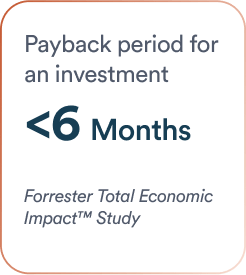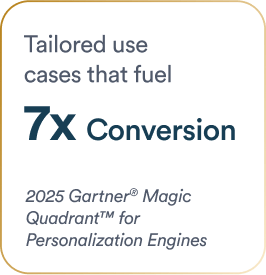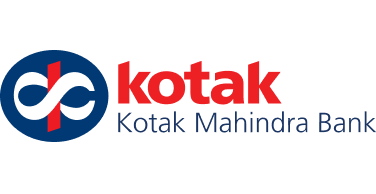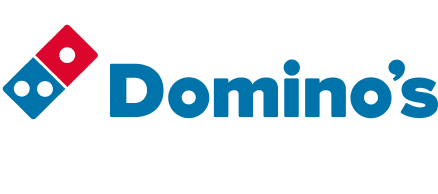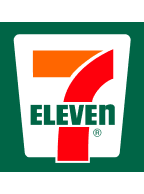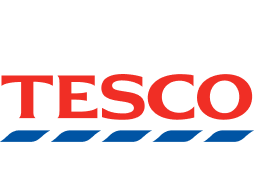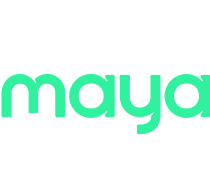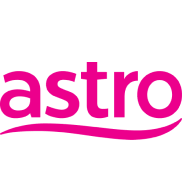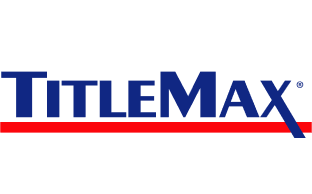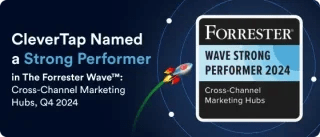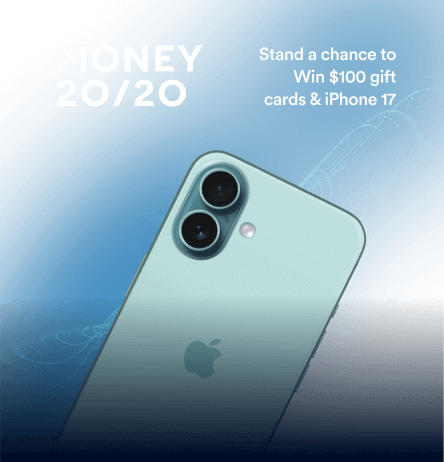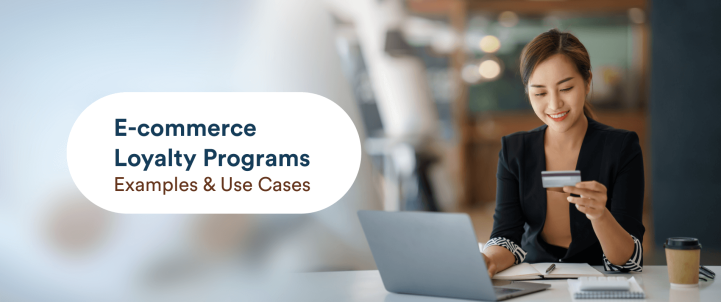E-commerce loyalty programs are strategic initiatives that incentivize online shoppers to return and engage more deeply with a brand. Instead of simply encouraging one-off transactions, these programs reward customers for their ongoing purchases and interactions, whether it’s shopping, leaving reviews, or referring a friend. This practice turns casual buyers into loyal brand advocates.
By offering points, perks, or tiered benefits that can be redeemed for discounts, exclusive products, or experiences, e-commerce loyalty programs help online businesses not only increase repeat purchases but also foster meaningful emotional connections and drive long-term customer value. In fact, 81% of consumers say that being part of a loyalty program makes them more likely to stick with a brand for future purchases.
In this guide, you’ll discover the fundamentals of e-commerce loyalty programs, key benefits, critical elements for success, and, most importantly, 11 real-world examples that demonstrate the remarkable variety and impact of loyalty initiatives in the digital retail world.
TL;DR: What to Know About E-commerce Loyalty Programs
- E-commerce loyalty programs reward customers for repeat purchases and ongoing engagement, helping brands move beyond one-off transactions to build lasting relationships. Rather than relying solely on discounts, these programs deliver value through personalized rewards, recognition, and experiences that encourage customers to return and engage more deeply.
- Different models address different goals: points-based programs encourage frequent interactions, tiered structures motivate higher spending with status and perks, value-based approaches connect rewards to causes, subscriptions provide convenience and exclusivity, while hybrid and coalition programs blend multiple benefits for broader appeal and flexibility.
- The best programs share common traits: they are easy to join, intuitive to use, personalized to customer behavior, and consistent across channels. With automation, timely communication, and emotional connection, brands can ensure loyalty initiatives feel seamless and genuinely rewarding.
- Ultimately, effective e-commerce loyalty programs go beyond transactions. They strengthen trust, build emotional bonds, and create a competitive advantage that keeps customers engaged, returning, and advocating for the brand long term.
Why E-commerce Brands Need Loyalty Programs
E-commerce loyalty programs have become an essential growth lever in a market defined by high competition, rising acquisition costs, and ever-shifting consumer expectations.
- Proven influence on repeat purchases: Over 83% of customers say these loyalty programs influence their decision to buy again. Moreover, members generate 12–18% more incremental revenue each year than non-members. Hence, it is clear that investing in e-commerce loyalty program strategies pays off.
- High return on investment: On average, brands report an ROI of nearly 4.8x on their loyalty investments, making these programs among the most profitable retention strategies available.
- Evolving expectations: Beyond the numbers, customer expectations are changing fast. Modern online shoppers expect more than routine discounts or generic perks.
- Personalization as a priority: Consumers want reward experiences and offers crafted to their unique behaviors and preferences.
- Ease and flexibility: Flexible and instantly redeemable rewards are now table stakes, with simplicity in both earning and using those rewards a must.
- Recognition matters: Buyers want to feel valued, whether through status tiers, early access, or meaningful surprises—not just accumulating points.
For growth-focused e-commerce brands, delivering on these expectations is critical. High-performing e-commerce loyalty rewards programs don’t just drive transactions; they create lasting emotional connections and keep top customers returning, even as competition intensifies.
Ready to dive deeper? Explore the many benefits of customer loyalty programs and how they can transform your business.
Types Of E-Commerce Loyalty Programs
E-commerce loyalty programs come in a variety of structures, each designed to encourage engagement, repeat purchases, and long-term retention in different ways. Choosing the right type depends on your product category, customer behavior patterns, and brand goals. Below are the most common models powering e-commerce customer loyalty today:
1. Points-Based
This classic model rewards customers with points for every purchase or qualifying action, like leaving a review, referring a friend, or sharing on social media. Shoppers can then redeem these points for discounts, gifts, or exclusive products, making the process feel both transactional and fun.
Points-based programs are especially effective for high-frequency categories such as beauty and grocery, where smaller, regular purchases quickly add up to meaningful rewards. For example, ALDO Crew lets members earn points on every dollar spent, redeemable for discounts and perks, and is structured to keep value clear and accessible for all shoppers.
2. Tiered
Tiered loyalty programs introduce a gamified approach by offering escalating benefits based on a customer’s engagement or spend levels. As shoppers move up tiers, they unlock bigger rewards, regardless of whether that’s early access to sales, free shipping, VIP events, or exclusive experiences.
This model is ideal for brands with strong brand equity or higher average order values, as it increases motivation for repeat business and high-ticket purchases. Nordstrom’s Nordy Club is a standout, giving members extra perks as they achieve higher status, from VIP shopping events to free alterations.
3. Value-Based
Value-based programs align rewards with a customer’s personal or social values, deepening brand affinity. Instead of (or in addition to) discounts, members may have the option to donate loyalty points to charity, support community projects, or access eco-friendly benefits. This model resonates especially with mission-driven e-commerce brands or businesses with strong sustainability goals. Members feel good about spending and sticking with brands that share their ideals.
4. Subscription
Subscription-based loyalty programs offer exclusive perks to customers who pay a recurring fee, typically monthly or yearly. Benefits might include free shipping, early product releases, or special discounts. This model is well-suited for convenience-driven or frequently replenished verticals such as pet care, beauty, or groceries. An example is Amazon Prime, which is one of the most successful subscription programs globally, offering unlimited fast delivery, streaming services, and early access to sales. The consistent, recurring value keeps members engaged and makes it difficult for them to switch to competitors.
5. Hybrid
Hybrid loyalty programs combine elements from multiple models, such as earning points, climbing tiers, and paying for enhanced benefits. This approach delivers flexibility and can be customized to match varying customer behaviors and segmentation strategies. Hybrid programs are best for brands seeking full-funnel engagement strategies and often require careful communication so members always understand how to maximize their rewards.
For instance, Domino’s Rewards combines points earned per order with multiple redemption tiers, exclusive member deals, and occasional limited-time promotions. Members can earn points, unlock rewards at different levels, and enjoy personalized offers, building a comprehensive experience that appeals to a wide range of customers.
6. Coalition
Coalition loyalty programs (shared across multiple brands or platforms) offer customers the convenience and value of earning and redeeming rewards in a wider network. Popular with marketplaces, large-scale retailers, or cross-industry alliances, this model can drive engagement beyond single-brand interactions and become a lifestyle benefit for shoppers.
Success requires careful partner alignment, as the overall brand experience should feel seamless for both customers and participating businesses.
A well-known example is the Nectar loyalty program in the UK. Nectar partners with more than 300 brands, including Sainsbury’s, Argos, and Esso, allowing members to collect points while shopping at any partner and redeem points across a wide range of services, from groceries to fuel to online retail. With over 20 million members, Nectar delivers a highly integrated and convenient loyalty ecosystem that appeals to everyday consumers.
Learn more: Explore the different types of customer loyalty programs and find the best fit for your business.
Planning The Right Loyalty Structure For Your Brand
Choosing the right e-commerce loyalty program structure starts with knowing your business goals and understanding your customers’ shopping behaviors. Begin by identifying what you hope to achieve. What motivates your best customers? Consider purchase frequency, average spend, and what types of rewards prompt action in your category.
Map these insights against the major loyalty models. Points-based schemes are effective for high-frequency, transactional categories, while tiered or hybrid programs might better engage high-value or brand-conscious shoppers. If your brand stands for something bigger, a value-based or cause-aligned approach could foster deeper connections. Subscription and paid programs work well when convenience or exclusive perks matter most.
No matter the model, ensure that your program is simple to join and easy to use across all touchpoints, website, app, and even in-store if relevant. The best loyalty programs today also leverage automation and real-time analytics, enabling you to personalize offers, monitor engagement, and continuously optimize the experience.
Ultimately, the best e-commerce loyalty rewards program for your brand is the one that aligns with your business strategy, delivers true value for your customers, and remains flexible enough to adapt as both your audience and the market evolve.
Elements Of An Effective Loyalty Program
Once you’ve chosen the right structure for your e-commerce loyalty program, the next step is making sure it actually delivers value for your customers and your business. Simply having a program in place isn’t enough. What separates high-performing loyalty initiatives from the rest is how well they’re designed, executed, and experienced by the customer.
The most effective e-commerce loyalty programs balance simplicity with sophistication: they’re easy to join, intuitive to use, and feel genuinely rewarding and emotionally resonant. Below are the core building blocks every brand should consider when designing or optimizing its program.
Easy Onboarding
A frictionless sign-up process is foundational for any successful e-commerce loyalty rewards program. The best programs make joining effortless, allowing customers to enroll at checkout, in just a few clicks through mobile apps, or even automatically via account creation. Lowering barriers to entry maximizes participation rates and drives immediate engagement.
Meaningful Rewards
To inspire lasting loyalty, rewards must feel valuable and relevant. Beyond basic discounts, effective programs offer perks that truly matter to shoppers: free shipping, early product access, exclusive items, or experiences that stand out in your category. The more attainable and desirable the reward, the more likely customers are to return and engage.
Personalization
Today’s e-commerce customers expect loyalty programs to reflect their preferences and behaviors. Using purchase data and browsing history, brands can deliver customized reward recommendations, targeted campaigns, and dynamic content. The result is a program where shoppers see real value and feel uniquely recognized as individuals.
Automation & Timely Delivery
Automation ensures rewards, communications, and offers reach the customer at exactly the right moment, such as a birthday discount or a real-time update on their next attainable perk. Automated, timely engagement keeps members active, minimizes manual workload, and capitalizes on behavioral triggers to drive conversions.
Emotional Hooks
Successful loyalty programs build emotional connections, not just financial incentives. Features like tiered status, surprise perks, exclusive access to sales or member-only events, and visible progress or recognition foster a sense of belonging and pride. Customers are more likely to remain loyal when they feel valued beyond the transaction.
11 Examples of Successful E-commerce Loyalty Programs
While the right structure and elements set the foundation, the true test of success is how these features are applied in day-to-day customer interactions—creating engaging, rewarding experiences that translate to a higher retention rate and customer lifetime value.
The following loyalty program examples spotlight a range of innovative approaches across various sectors and customer demographics. Each illustrates how thoughtful design, creative perks, and seamless user experiences can turn shoppers into brand loyalists. Use these case studies to spark ideas for your program, whether you’re building from scratch or optimizing what’s already in place.
1. Sephora Beauty Insider
Sephora’s Beauty Insider is a leading example of a tiered loyalty program. Members progress through Insider, VIB, and Rouge tiers by increasing annual spend, unlocking special perks such as early product access, birthday gifts, and exclusive points events.
This layered approach motivates customers to strive for higher status and deepens engagement. The clear structure, personalized rewards, and ongoing excitement keep members coming back and help Sephora maintain industry-leading customer retention.
2. Flipkart Plus
Flipkart Plus uses a hybrid model that combines points (SuperCoins) with exclusive partner benefits. Customers earn SuperCoins on every purchase and can redeem them for perks with partner brands across travel, entertainment, and lifestyle.
The seamless program experience is enhanced by real-time, personalized engagement, powered in part by CleverTap, which keeps members active during high shopping seasons and encourages repeat purchases. As a result, Plus members transact and spend significantly more than non-members.
3. Walmart+
Walmart+ is a subscription-based loyalty program focused on delivering convenience and everyday value. By paying a monthly or annual fee, members receive unlimited free delivery, fuel discounts, and early shopping windows for sales events.
The ease of recurring value through core benefits encourages higher retention and helps Walmart compete with major rivals in the online grocery and general merchandise space.
4. SHEIN Bonus Points
SHEIN’s points-based program goes beyond rewarding purchases: customers earn points for daily check-ins, writing reviews, and participating in campaigns. Points can be applied for significant discounts (often up to 70% off), incentivizing regular engagement with the brand and driving continual app interaction. The gamified and omnichannel nature of the program keeps SHEIN’s younger audience especially engaged and loyal.
5. PetSmart Treat Rewards
PetSmart Treats blends utility and emotion by awarding points on every transaction, as well as for services and donations. Notably, customers also receive personalized gifts on their pets’ birthdays, creating a personal connection.
With options to donate points to animal charities, Treats taps into emotional loyalty drivers, which increases engagement and builds lasting affinity with pet owners.
6. Pacifica Beauty Rewards
Pacifica Beauty Rewards uses a classic points structure while featuring a branded loyalty hub that simplifies tracking and redemption. Customers earn for purchases, social shares, and referrals and can easily redeem points at checkout for discounts or products.
The program stands out for its user-friendly UX; members see available rewards up front, which leads to much higher average spend and repeat purchase rates than non-members.
7. Mirenesse Love Rewards
Mirenesse Gold introduces a paid, tiered element to its loyalty strategy. Customers subscribing to the Gold tier receive enhanced perks: early access to launches, bonus points, exclusive sampling panels, and more. This structure targets the brand’s most dedicated fans, increasing their spend and repeat purchase frequency while providing an avenue for deeper brand interaction.
8. Foot Locker FLX Rewards
FLX Rewards weaves together points and tiered status to deliver continuous motivation. Members earn points for purchases and can redeem them for experiential rewards, like event access, or practical benefits, such as free shipping.
The visible tier structure and ability to unlock exclusive experiences drive both higher basket size and increased loyalty across Foot Locker’s diverse, multi-brand platforms.
9. Target Circle
Target Circle is a free, points-based program that integrates effortlessly into Target’s omnichannel offering. Members earn 1% back on purchases and gain access to personalized deals and tailored promotional offers.
The simplicity of the structure, combined with strategic use of customer data for recommendations, creates strong loyalty and increases the likelihood of shopping online and in-store.
10. LIVELY Loyalty Program
LIVELY’s loyalty system combines tiered rewards with opportunities to earn points for purchases, referrals, and social activity. The three-tier structure (Insider, Inner Circle, VIP) hands out unique perks such as upgraded shipping and surprise gifts as customers move up.
Automatic enrollment and clear benefit communication drive adoption and ongoing participation, cultivating a community of engaged shoppers.
11. Blume Blumetopia
Blume’s Blumetopia program crafts loyalty with a heavy emphasis on community and brand values. Shoppers collect Blume Bucks for buying, referring friends, and engaging on social media, then exchange them for branded merchandise or wellness kits.
By rewarding behaviors aligned with the brand’s mission and prioritizing a seamless digital experience, Blume builds sustained engagement among Gen Z and younger millennial customers.
How CleverTap Powers Smarter Loyalty Campaigns
For brands aiming to launch or optimize a high-ROI e-commerce loyalty program, the difference between ordinary engagement and sustained customer loyalty often comes down to technology.
CleverTap acts as an intelligent engine behind leading e-commerce loyalty programs, enabling brands to personalize experiences, drive retention, and accelerate growth from a unified engagement platform. With CleverTap, e-commerce brands can:
- Deliver Personalization At Scale: Leverage deep behavioral analytics and segmentation to create highly relevant loyalty offers, rewards, and communications tailored to each user’s activity and preferences. This fuels repeat purchases and inspires customer advocacy.
- Automate Real-Time Campaigns: Use event-driven automation to trigger loyalty messages, reward notifications, or win-back offers exactly when shoppers are most likely to engage. Every interaction feels timely and meaningful.
- Orchestrate Omnichannel Engagement: Reach customers across app, web, SMS, push notifications, and email, all coordinated from a single platform. Loyalty program members receive consistent, seamless experiences wherever they shop.
- Optimize With Actionable Insights: Built-in analytics reveal how your program is performing—showing which rewards boost retention, where users drop off, and which segments deliver the highest lifetime value.
Elevating Loyalty with CleverTap Promos
While CleverTap powers engagement and personalization, its advanced feature, CleverTap Promos, adds a complete loyalty and rewards management layer. With Promos, brands can:
- Run Dynamic Reward Programs: Create personalized coupons, cashback offers, and tier-based rewards that adapt to customer behavior and lifecycle milestones.
- Manage API-First Wallets: Issue, track, and redeem points or rewards across channels, giving customers real-time visibility into balances and benefits.
- Execute Partner Voucher Campaigns: Import and distribute third-party vouchers at scale, track redemptions, and prevent misuse while delivering added cross-brand value.
- Measure Impact at Scale: Track redemption patterns, coupon usage, and ROI to continuously refine and improve loyalty initiatives.
By combining CleverTap’s engagement platform with CleverTap Promos’ loyalty infrastructure, e-commerce brands gain the ability to build smarter, more scalable programs that transform transactions into long-term relationships and measurable growth.
Power smarter e-commerce loyalty programs with CleverTap Promos and see higher conversions, repeat purchases, and retention.
Turning Shoppers Into Lifelong Advocates
E-commerce loyalty programs are a cornerstone for driving sustained customer engagement and business growth. By understanding the best-performing loyalty models and drawing inspiration from successful brands, you can create a program that truly connects with your audience. Such programs not only incentivize repeat purchases but also build meaningful emotional bonds that enhance lifetime value.
CleverTap enables e-commerce brands to amplify these benefits by delivering personalized, timely, and automated loyalty campaigns tailored to individual customer behaviors. With the right blend of strategy and technology, your e-commerce loyalty program can transform shoppers into devoted advocates, driving long-term loyalty and measurable ROI.
FAQs About E-commerce Loyalty Programs
Q1. How do e-commerce loyalty programs impact long-term customer retention?
Loyalty programs encourage repeat purchases by creating ongoing value beyond discounts. Over time, they help reduce churn, increase customer lifetime value, and strengthen brand advocacy — making retention more predictable and cost-efficient compared to acquisition-heavy strategies.
Q2. What types of e-commerce reward programs resonate most with today’s online shoppers?
Modern consumers expect more than basic discounts. Flexible options like free shipping, early access to new products, experiential perks, and even cause-based rewards tend to drive stronger engagement. Programs that balance practical benefits with emotional value perform best.
3. How can e-commerce brands measure the ROI of their loyalty programs?
Key metrics include repeat purchase rate, average order value, redemption activity, customer lifetime value, and incremental revenue from members versus non-members. Advanced platforms also provide real-time analytics to track engagement and optimize campaigns for maximum ROI.
Kiran Pius 
Leads Product Launches, Adoption, & Evangelism.Expert in cross-channel marketing strategies & platforms.
Free Customer Engagement Guides
Join our newsletter for actionable tips and proven strategies to grow your business and engage your customers.



